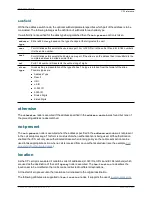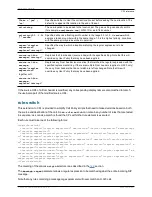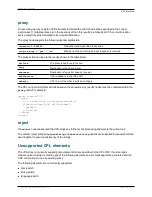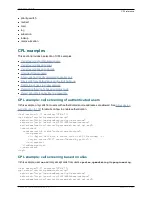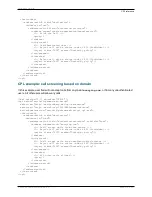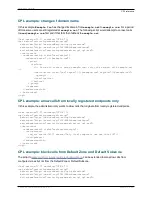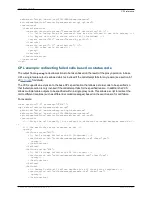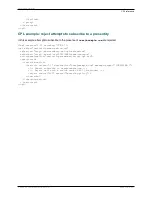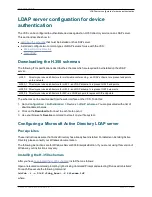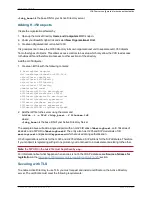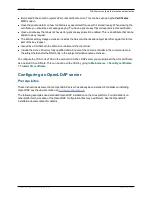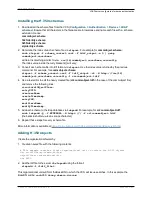
It is good practice to keep the H.350 directory in its own organizational unit to separate out H.350 objects
from other types of objects. This allows access controls to be setup which only allow the VCS read access
to the BaseDN and therefore limit access to other sections of the directory.
Note:
the SIP URI in the
ldif
file must be prefixed by
sip:
Add the H.350 objects:
1. Create an ldif file with the following contents:
# MeetingRoom1 endpoint
dn: commUniqueId=comm1,ou=h350,dc=mydomain,dc=com
objectClass: commObject
objectClass: h323Identity
objectClass: h235Identity
objectClass: SIPIdentity
commUniqueId: comm1
h323Identityh323-ID: MeetingRoom1
h323IdentitydialedDigits: 626262
h235IdentityEndpointID: meetingroom1
h235IdentityPassword: mypassword
SIPIdentityUserName: meetingroom1
SIPIdentityPassword: mypassword
SIPIdentitySIPURI: sip:[email protected]
2. Add the ldif file to the server via
slapadd
using the format:
slapadd -l <ldif_file>
The example above will add a single endpoint with an H.323 ID alias of
MeetingRoom1
, an E.164 alias of
626262
and a SIP URI of
. The entry also has H.235 and SIP credentials of
ID
meetingroom1
and password
mypassword
which are used during authentication.
H.323 registrations will look for the H.323 and H.235 attributes; SIP will look for the SIP attributes. Therefore
if your endpoint is registering with just one protocol you do not need to include elements relating to the other.
For information about what happens when an alias is not in the LDAP database see
Source of aliases for
registration
in the
Using an H.350 directory service lookup via LDAP [p.120]
section.
Securing with TLS
The connection to the LDAP server can be encrypted by enabling Transport Level Security (TLS) on the
connection. To do this you must create an X.509 certificate for the LDAP server to allow the VCS to verify
the server’s identity. After the certificate has been created you will need to install the following three files
associated with the certificate onto the LDAP server:
n
the certificate for the LDAP server
n
the private key for the LDAP server
n
the certificate of the Certificate Authority (CA) that was used to sign the LDAP server’s certificate
All three files should be in PEM file format.
The LDAP server must be configured to use the certificate. To do this:
n
Edit /etc/openldap/slapd.conf and add the following three lines:
TLSCACertificateFile <path to CA certificate>
TLSCertificateFile <path to LDAP server certificate>
TLSCertificateKeyFile <path to LDAP private key>
Cisco VCS Administrator Guide (X8.1.1)
Page 381 of 507
Reference material
LDAP server configuration for device authentication


